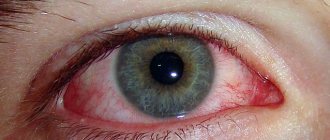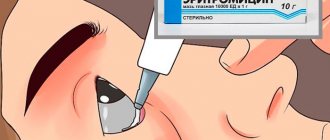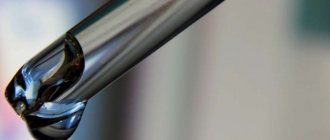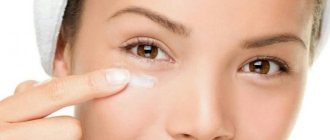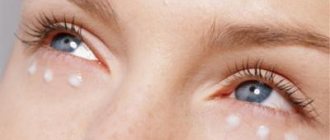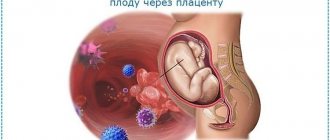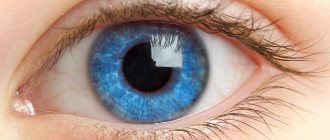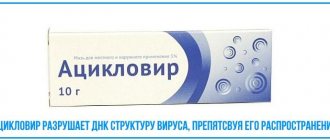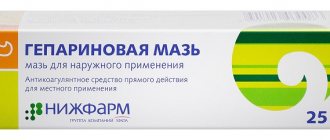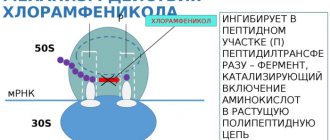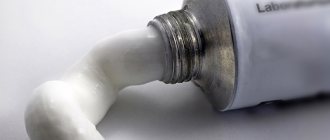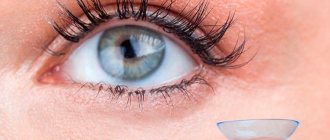Hydrocortisone ointment is available in several forms:
- Eye ointment (0.5%, 1% and 2.5%).
The tube contains 3g or 5g. The product is a thick emulsion. It may have a yellow or greenish tint. Intended for use in ophthalmology.
- Ointment for external use (1%).
The tube contains 10 g of light yellow ointment. Used for the following skin diseases in adults and children:
- eczema;
- neurodermatitis;
- dermatitis;
- insect bites;
- psoriasis.
You can also find hydrocortisone in ampoules. It is a whitish emulsion. Intended for injection into joints and muscle tissue. In the same form, it is prescribed for inhalation for prolonged cough. Hydrocortisone is also included in complex drops.
Compound
Information about the composition of Hydrocortisone ointment, methods of use, age restrictions is contained in the annotation - a paper insert in the package. The product is intended for the treatment of children over 2 years of age and adults; it is available without a doctor's prescription. The color of the drug is light yellow or white with a yellowish tint. The structure is homogeneous.
Hydrocortisone ointment for external use, produced in Russia by pharmaceutical companies, contains 10.0 or 5.0 mg. hydrocortisone acetate (per 1 g of medicine). Other ingredients in the drug include ointment base, fillers and preservatives.
Excipients of hydrocortisone ointment:
- petrolatum;
- purified water;
- anhydrous lanolin;
- stearic acid;
- parabens (nipagin and nipazole);
- pentol.
Hydrocortisone acetate is part of ophthalmic preparations. The Russian-made medicine contains 5 mg. hydrocortisone acetate in 1 gram. Excipients: Vaseline and nipagin.
Hydrocortisone-Pos ophthalmic ointment 1% and 2.5% contains 10 and 25 mg, respectively. active substance. Additional ingredients: petroleum jelly, lanolin, liquid paraffin.
The external agent and eye ointment have a uniform consistency. Transparent, white or white with a yellowish tint. Hydrocortisone eye ointment is packaged in tubes of 2.5-5 g, a preparation with the same active ingredient for external use - 5-30 g.
Cost and replacement drugs
The drug is available in pharmacies without a prescription. The shelf life of eye ointment is 2 years under appropriate conditions. Storage temperature should not exceed +20 degrees. Its cost is about 30 rubles per tube.
In some cases, such an ointment may not be suitable for a child. In this case, you can select drugs with a similar effect.
Blefarogel
Often prescribed for pathologies caused by prolonged wearing of contact lenses or eye fatigue. The main components are hyaluronic acid and hemodez.
The cost of a tube with 15 g of gel is from 400 rubles.
Tobradex
Has anti-inflammatory and anti-edematous properties. The active substance in the composition is dexamethasone.
It can be used for inflammation of the eye membranes of various types, as well as for preventive purposes.
A tube of ointment 3.5 g costs 200-250 rubles.
Phloxal
Used as part of therapy for keratitis and conjunctivitis of infectious origin. Also used after ophthalmological operations.
Ointment 0.3% (3g) costs 150 rubles.
Stillavit
A combined drug with strong anti-inflammatory properties. Additionally, it moisturizes the eyes, so it is often used to prevent drying out of the cornea. Eliminates painful sensations.
Dexa-Gentamicin
The main components of this drug are gentamicin and dexamethasone. It is used in ophthalmology in the treatment of blepharitis and conjunctivitis. The ointment has a good antibacterial effect. This product is suitable for external use only.
Cost from 80 rubles per tube.
Properties
Some people are concerned about the side effects of hormonal medications. This type of phobia has been described in medicine and psychology. There are dermatologist patients who are skeptical about the use of any steroid drugs. In this regard, many are interested in whether Hydrocortisone is a hormonal ointment or not.
Hydrocortisone (cortisol) is a glucocorticoid hormone of steroid origin (GCS), produced by the human adrenal cortex. For local use, its synthetic analogue in the form of ether is used. The product has almost no side effects when used externally.
Possible negative reactions (develop when used in large doses or for too long):
- development of “steroid acne”;
- perioral dermatitis;
- addiction and skin atrophy.
The active substance hydrocortisone acetate in a dosage of 0.5-2.5%, depending on the content of the active substance, is a topical corticosteroid with a weak or moderate anti-inflammatory effect.
Use Hydrocortisone ointment for the face, apply to the neck, skin folds (under the breast, in the armpit, elbow, wrist, groin), and perineal area.
pharmachologic effect
Hydrocortisone is involved in many physiological processes in the body, for example, it regulates the course of inflammatory reactions. In some cases, suppressing the body's own defense mechanism is helpful. Allergies involve an overreaction of the immune system to habitual irritants. A hormonal substance suppresses this excessive reaction.
Let’s clarify what Hydrocortisone ointment helps with. The medicine reduces inflammation that is already occurring, but does not eliminate its cause.
Action of the drug:
- reduces exudation (fluid release from permeable capillaries into the intercellular space);
- has a local anti-inflammatory and anti-edematous effect;
- accelerates the removal of scales and keratinization;
- eliminates skin redness;
- relieves itching.
Elderly people and young children are not recommended to use external GCS-based products frequently and for a long time for the face and body. The active substance from the drugs accumulates in the stratum corneum of the skin. A depot is formed, from which the active ingredient is slowly released and passes into the dermis.
With age, the skin becomes thinner and the stratum corneum no longer retains cortisone. This threatens rapid absorption of the substance into the blood and an increased risk of negative effects. The same applies to the skin of young children.
What is Hydrocortisone ointment used for?
Unpleasant pimples, minor sunburns - you can get rid of these and other skin problems without visiting a doctor with the help of a drug based on GCS.
A short list of what Hydrocortisone ointment is used for is supplemented by conditions such as allergies and insect bites. The external remedy alleviates inflammatory skin conditions such as eczema, neurodermatitis, and psoriasis.
The use of Hydrocortisone ointment is indicated for inflammatory and allergic skin diseases with minor symptoms. The hormonal agent acts locally - only in the area to which it is applied.
Indications for Hydrocortisone ointment for external use:
- dermatitis (atopic, allergic, contact);
- moderate inflammation of the skin;
- skin itching of unknown etiology;
- reactions to insect bites;
- various forms of eczema;
- lichen planus;
- dyshidrosis of the hands;
- sunburn;
- erythroderma;
- neurodermatitis;
- pruritus;
- seborrhea;
- psoriasis.
Hydrocortisone does not help with infectious, parasitic and sexually transmitted diseases.
Eye ointment is used for allergic eye diseases. The product is used for the prevention and treatment of inflammatory processes after injuries, surgery on the eyeball, and previous keratitis.
Indications for the use of Hydrocortisone ointment (ophthalmic) are also: blepharitis, blepharoconjunctivitis, keratoconjunctivitis, acute and chronic iritis, iridocyclitis. If the cornea is damaged by a chemical or thermal burn, the drug is applied after epithelization of the cornea.
Indications for use in ophthalmology
Eye ointment with hydrocortisone is used for damage to the membranes of the eye due to:
- blepharitis or conjunctivitis;
- thermal or chemical burn of the organs of vision;
- non-bacterial damage to the tissues around the eye;
- iritis and iridocyclitis.
This drug is also prescribed when tissue irritation occurs after eye surgery. You can use ointment after burns only when the corneal layer is completely restored. As part of complex therapy, hydrocortisone ointment for children is used in the treatment of barley.
Instructions for use of Hydrocortisone ointment
The medicine is applied in a thin layer to the affected area of the skin. The amount of the drug is on the tip of your finger. Gently rub the product in without pressing on the skin. After applying the medicine, you should wash your hands.
How to use hydrocortisone ointment
| Patient age | Single dose | Total dose | Time |
| At the beginning of treatment | |||
| Children from 2 years old and adults | At the tip of your finger | 2-3 times a day | Regardless of the time of day |
| Subsequent treatment | |||
| Children from 2 years old and adults | At the tip of your finger | Once a day | Regardless of the time of day, every 2-3 days |
To prevent negative effects, the product can be used for weeks. The drug is applied for 7 days, then a break is taken for the next week. Or they use another scheme: apply for 3 days, then take a 4-day break. For chronic skin diseases, use the medicine several times a week on the most frequently inflamed areas of the skin.
The duration of treatment is usually 6-14 days. If symptoms persist and the disease persists, you can use the drug for up to 20 days. When the clinical picture improves, it should be applied for another 1-2 days to avoid relapse of the disease.
To enhance the effect, use an occlusive dressing on limited areas of the skin.
Instructions for use of Hydrocortisone ointment limit the duration of treatment with the drug for children to 7 days. Eliminates measures leading to increased absorption of hormonal substances: fixing and occlusive dressings, warm compresses.
Application of eye ointment
A strip of the drug 0.5-1 cm long is placed in the conjunctival sac. The second method is used for the eyelids - applied externally to inflamed areas.
The frequency of use of Hydrocortisone ointment for the eyes is 2 times a day. The duration of treatment is no more than 2 weeks. To prevent inflammatory processes after epithelization of the cornea, apply 1 or 2 times a day.
For allergies and dermatitis
Allergic reactions are accompanied by redness and itching of the skin. Small and large blisters form. The active substance of the drug suppresses inflammatory processes in the skin and prevents the release of histamine. Hydrocortisone ointment for allergies and dermatitis prevents further damage to the skin as a result of scratching.
Apply a thin layer of the product to the affected areas and rub in gently. Apply 2-3 times a day. After the skin condition improves, use the drug once a day, then every 2-3 days. For vulvitis, use the medicine at night to relieve severe itching.
For eczema and lichen
Hydrocortisone ointment treats eczema and lichen planus, a chronic disease caused by immune inflammation. The drug does not help against lichen caused by infection with a fungus.
A drug is used with a concentration of the active ingredient from 0.5 to 2.5%. Apply a thin layer to the affected area 1-2 times a day. As the skin heals and regenerates, the amount of the drug is reduced. Treatment should not be stopped abruptly. It is necessary to gradually reduce the dose and number of applications.
For psoriasis
Hard white plaques and silvery scales form on the affected areas. Psoriasis, which is called palmar psoriasis, causes dry, red-pink pimples.
Hydrocortisone ointment is applied under the bandage after a softening bath. The product should not be used on severely damaged skin, on an area of more than 10% of the body surface.
For the nose
Hydrocortisone is used for prolonged runny nose in combination with other drugs. A liquid solution of a hormonal substance is used, prepared from a suspension in ampoules or tablets.
Hydrocortisone ointment should not be put into the nose, since the product contains petroleum jelly and is not intended for the mucous membrane.
For the ears
Hydrocortisone ointment is used for the ear for allergic external otitis in acute or chronic form. The medicine is applied to cotton wool and placed in the ear canal. The drug helps get rid of severe itching. Apply 2 times a day.
For joints
For pain and inflammation that accompany joint diseases, it is possible to prescribe a suspension for intramuscular and intra-articular administration or a solution of Hydrocortisone in ampoules.
Intra-articular and periarticular administration of GCS drugs is carried out in a hospital or clinic. Hydrocortisone ointment for joints does not give the same effect as injection directly into the joint.
It is possible to use Hydrocortisone in the form of an ointment or solution for electrophoresis. The drug eliminates the symptoms of inflammation in the joint area and exhibits a metabolic effect. The effect of the administration of the GCS drug lasts for 1-2 weeks.
For hemorrhoids
Hydrocortisone ointment for hemorrhoids is used after hygiene measures. The drug is used for external hemorrhoids, fissures, dermatitis and itching in the anal area.
Squeeze out a strip of medication the length of the phalanx of the index finger. Apply a thin layer to the affected area of skin and inject a little into the rectal canal. Apply 1-3 times a day depending on the severity of the disease. The duration of treatment is from 7 to 20 days.
How to use
When using eye ointment, it is very important to follow basic hygiene rules, because we are talking about the child’s vision:
- Before use, wash your hands thoroughly with soap.
- When used for ophthalmic purposes, the ointment is applied to the lower eyelid area or to the conjunctival sac.
- A strip 1-2 cm long is squeezed out of the tube. In this case, direct contact of the tip of the tube with the tissues of the eye should be avoided.
This treatment should be carried out 2-3 times a day. The average course of treatment is 10-12 days. The drug cannot be used for longer, as this can lead to vision problems. In infants, the duration of the course should not exceed 7-8 days.
Use in cosmetology
The use of Hydrocortisone ointment for acne is a temporary measure that does not eliminate the cause of the rash. This could be hormonal changes in the body, bacterial growth, or excessive activity of the sebaceous glands. The drug is applied only to the pimple itself, used in a short course, no longer than 3 days.
Hydrocortisone ointment is used in cosmetology as a means to reduce inflammation. The drug is used in short courses. They take a break between them - from 3 to 7 days.
When applying Hydrocortisone ointment for wrinkles in adulthood, there is a risk of increased intraocular pressure. It is not advisable to use the product on the lips due to the increased risk of ingestion and systemic action.
Contraindications
The drug should not be used in case of hypersensitivity to hydrocortisone or any of the auxiliary components. The drug is contraindicated for wound and ulcerative lesions, in children under 2 years of age, and during lactation.
Other contraindications to the use of Hydrocortisone ointment for the skin:
- viral, bacterial and fungal infections;
- syphilitic lesions;
- perioral dermatitis;
- acne vulgaris (acne);
- lupus;
- skin tumors;
- Rosacea.
Hydrocortisone ointment during pregnancy is strictly contraindicated in the first trimester. In gynecology, it is possible to prescribe GCS to pregnant women in later stages after assessing the risk to the unborn child.
Contraindications for Hydrocortisone-Pos ointment include tuberculosis and fungal eye infections, trachoma and the vaccination period. Eye ointment should not be used for corneal herpes and other viral diseases of the organ of vision.
During pregnancy and lactation, in children over 1 year of age, the use of the drug is possible, but after assessing the risk to the fetus or child.
Can it be prescribed in childhood?
It should be noted that this drug is hormonal, so its use in children is limited. The instructions for use of Hydrocortisone state that the drug can affect the production of hormones that regulate growth. Therefore, the use of such a drug by patients under 12 years of age is possible only as prescribed by a doctor.
In the case of eye ointment, caution should be observed until the age of 18. Only a specialist can determine the dosage and regimen.
Ointment 0.5% in special cases can be prescribed by a doctor to children under 2 years of age. Hydrocortisone is prescribed for the treatment of children only when the result of use significantly outweighs the risk of possible side effects.
Side effects
In rare cases, allergic reactions occur in the form of hyperemia and swelling. Itching and burning may occur. Occasionally, the use of GCS drugs causes infectious skin lesions and hypertrichosis.
Side effects for external use:
- allergic and drug dermatitis;
- secondary infection;
- hypopigmentation;
- skin maceration;
- acne;
- folliculitis;
- prickly heat;
- eczema;
- striae.
With prolonged use and application to large areas of skin, systemic side effects characteristic of hormonal drugs may develop. Uncontrolled use of the ophthalmic drug occasionally leads to secondary glaucoma and dermatoconjunctivitis.
Side effects, overdose and interactions
- In some cases, when applying Hydrocortisone ophthalmic ointment, the patient may feel a slight burning sensation in this area.
- Using it for too long can lead to increased intraocular pressure, as well as pathologies of the optic nerve.
- Sometimes, in the case of long-term use, the development of a repeated bacterial or fungal infection may occur.
- In rare cases, the product may cause an allergic reaction.
- In case of overdose, local reactions may be enhanced. When removing excessive amounts of ointment, they quickly go away.
Incompatibility with other drugs occurs if treatment with hydrocortisone eye ointment lasts too long. In this case, the main substance enters the bloodstream and can affect the action of many drugs:
- Diuretics.
- Insulin.
- Anticoagulants.
- Preparations containing silver.
- Products with antihistamine properties.
Therefore, it is necessary to inform your ophthalmologist about treatment with other medications. Only a specialist can judge the compatibility of products.
Storage conditions and shelf life
Hydrocortisone ointment should be stored away from sources of light and heat, out of the reach of children. Heating the air in the room above 20-25°C is not allowed. The shelf life of the drug is 2 years.
The medicine should not be used after the expiration date indicated on the tube, cardboard box and in the annotation.
Analogs
All ointments based on hydrocortisone for external use with the same content of active ingredient, produced in Russia, are complete analogues. They have the same indications, contraindications, and method of use.
Group analogues of Hydrocortisone ointment - medicines for itching, rash and redness of the skin with other corticosteroids. Many of them are 2-3 times, or even an order of magnitude more expensive than the Russian drug.
Trade name of hormonal ointment or cream (active ingredient):
- Locoid (hydrocortisone 17-butyrate);
- Dermosolone, Aurobin (prednisolone);
- Akriderm, Beloderm (betamethasone);
- Afloderm (alclomethasone);
- Lorinden (flumethasone);
- Elokom (mometasone).
An incomplete analogue is the combined drug Gioxyzon. The product contains hydrocortisone and an antibiotic. The ointment is used when the affected area is infected.
